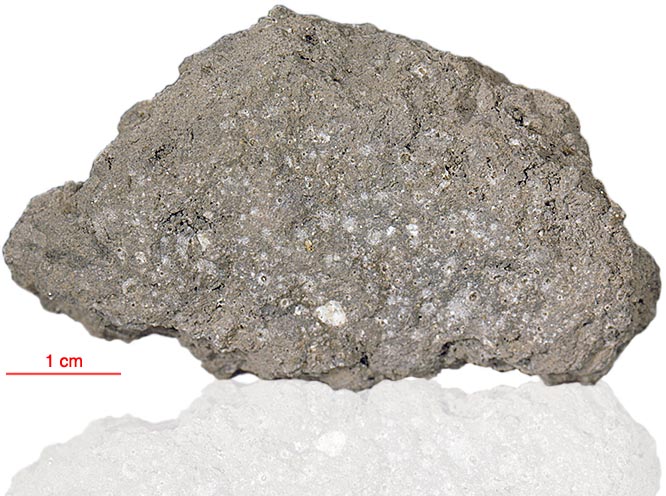
Fact sheet
72536 (and its companion 72535) has a texture characteristic of a fine-grained, clast-bearing impact melt rather typical of the Apollo 17 highland breccias. It has a dark porous basaltic-textured groundmass, with plagioclase laths less than 30 microns long, sub-ophitically enclosed by irregular mafic crystals. Ca-plagioclase is the major mineral clast. Small lithic clasts make up about ~5 % of the sample. Rotation 1 shows mineral and lithic clasts and rotation 2 shows a polygonised anorthosite clast.
The sample weighed 52.3 grams before analysis and has not been dated.
Further details of this and other Apollo samples are here: http://curator.jsc.nasa.gov/lunar/
Note: in places this thin section is slightly thick.
Apollo 17, the final manned landing mission, had two objectives: to obtain samples of ancient rocks from the lunar highlands and to look for evidence of younger volcanic activity on the valley floor.
This small Collection contains material deriving from both periods, including igneous rocks around 4.3 billion years old from the lunar highlands as well as younger volcanic samples dating from about 3.6 billion years ago.
Apollo 17 was launched on 7 December 1972.






